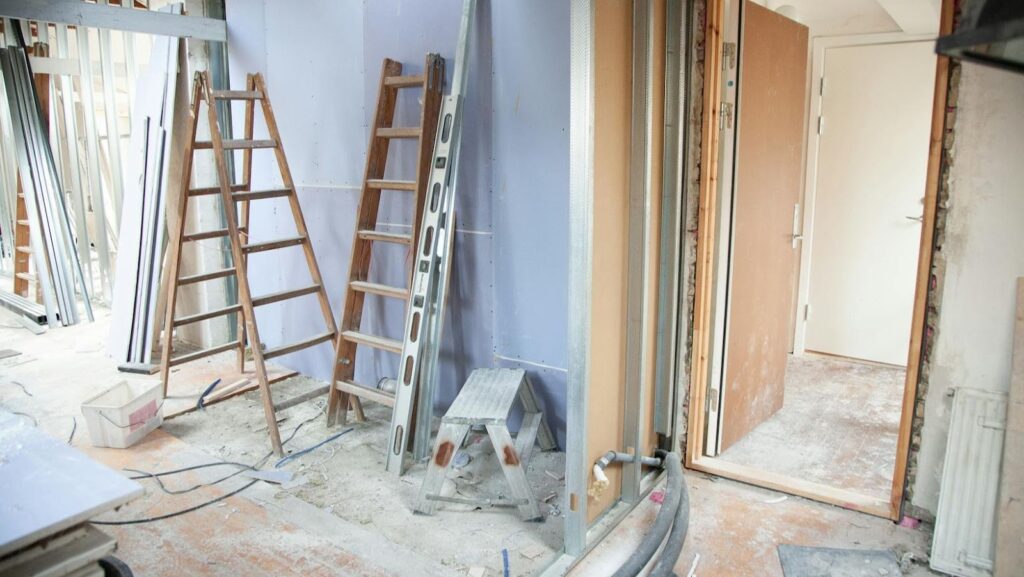Moving out of Miami and renovating a new home remotely can seem overwhelming, but it’s increasingly common in today’s mobile world. This dual challenge of coordinating a long-distance move while overseeing a home renovation requires meticulous planning and effective communication.
This guide is designed to help you navigate the complexities of remote renovation, ensuring your new home is ready for you when you arrive.
Start with a Detailed Plan
The foundation of any successful renovation project is a detailed plan. Before you even pack your first box in Miami, take the time to map out every aspect of your renovation. Start by listing all the changes you want to make in your new home, from major structural modifications to minor aesthetic updates. This plan should include a timeline for each phase of the renovation, a list of necessary materials, and a detailed budget.
When planning, consider the specifics of your new home and how they might impact your project. Are there any local building codes or regulations that you need to adhere to? What about the climate—will it affect your choice of materials or the timing of certain projects? Being thorough in your initial planning stages can save you a lot of headaches down the line.
Hire Reliable Movers for a Smooth Transition
Hiring reliable local Miami long distance movers is crucial for a smooth move to your new home. Professional movers not only transport your belongings safely but can also offer valuable support in coordinating your move and renovation schedule. When searching for long distance moving companies, look for those with solid reputations and positive feedbacks. Don’t hesitate to ask for references or inquire about their experience with long-distance moves.
A reliable moving company can also provide additional services that may be beneficial during your renovation, such as temporary storage solutions. This can be particularly useful if your new home isn’t immediately ready for move-in, allowing you to keep your possessions safe while work is being completed.
Research Your New Area Thoroughly
Understanding your new area is key to a successful renovation. Research the local building codes, permit requirements, and any other regulations that might affect your project. This information is typically available on your new city’s official website or through local government offices.
Additionally, familiarize yourself with local contractors and suppliers. Look for feedbacks and testimonials from other homeowners in the area to gauge their reliability and quality of work. Building a network of trusted local professionals can make the renovation process much smoother and less stressful.
Find and Vet Contractors Remotely
Finding and vetting contractors remotely can be challenging, but it’s entirely possible with the right approach. Start by searching for contractors who have experience with the type of renovations you’re planning. Look for feedbacks and ratings on reputable websites, and ask for recommendations from local real estate agents or new neighbors.
When you’ve shortlisted a few contractors, schedule video interviews to discuss your project in detail. Ask about their experience, availability, and how they handle remote projects. Don’t be afraid to request references and follow up with their previous clients to ensure they have a solid track record of quality work and reliability.
Utilize Technology for Seamless Oversight
Leveraging technology can significantly streamline the process of managing a remote renovation. Tools like video calls, project management software, and virtual tours enable you to stay connected and oversee the progress of your renovation without being physically present. Applications such as Zoom or Skype allow you to hold regular meetings with your contractors, ensuring that you are updated on the project’s progress and any issues that arise.
Additionally, project management software like Trello or Asana can help you keep track of tasks, deadlines, and responsibilities. These platforms facilitate clear communication between you and your contractors, allowing for better coordination and fewer misunderstandings. Virtual tours and 3D renderings of your renovation plans can also provide a more tangible sense of how your new home will look, helping you make informed decisions even from afar.
Schedule Regular Updates and Remote Inspections
Regular updates and inspections are vital to ensuring your renovation stays on track. Schedule frequent check-ins with your contractors to discuss the progress of the project and address any concerns. These updates can be conducted via phone calls, emails, or video conferences, depending on your preference and the nature of the discussion.
Remote inspections are another essential component of managing a renovation from a distance. Consider hiring a local home inspector to visit the site regularly and provide detailed reports on the work being done. This third-party perspective can be invaluable in identifying potential issues early and ensuring that the renovation meets your standards and local building codes.
Manage Your Time Efficiently for a Stress-Free Experience
Time management is crucial when juggling a long-distance move and a home renovation. Create a detailed timeline that outlines all the key milestones for both your move and the renovation. This timeline should include the start and end dates for each phase of the renovation, as well as deadlines for securing permits, ordering materials, and completing inspections.
Sticking to this timeline requires discipline and organization. Use calendars, reminders, and checklists to keep track of important dates and tasks. Delegate responsibilities where possible, whether it’s asking a trusted friend or family member to oversee certain aspects of the move or hiring professionals to manage specific parts of the renovation.
Prepare for Potential Delays and Develop Contingency Plans
Renovations rarely go exactly as planned, and potential delays are almost inevitable. Whether it’s due to supply chain issues, unexpected structural problems, or weather-related delays, it’s important to be prepared and have contingency plans in place.
Identify the most likely sources of delays and develop strategies to mitigate their impact. For example, if you anticipate delays in receiving materials, order them well in advance and have a backup supplier in mind. If bad weather is a concern, schedule critical outdoor work for more favorable seasons and build flexibility into your timeline to accommodate potential disruptions.
Conclusion
Renovating a new home while planning a long-distance move from Miami might seem like a daunting task, but with the right approach, it can be a smooth and rewarding experience. Start with a detailed plan that outlines every aspect of your renovation, from budgeting to timelines. Hire reliable movers to ease the transition and ensure your belongings arrive safely. Thoroughly research your new area to understand local regulations and build a network of trusted contractors and suppliers.
Leverage technology to stay connected and manage your renovation from a distance. Schedule regular updates and remote inspections to keep the project on track, and manage your time efficiently to balance the demands of moving and renovating. Prepare for potential delays by developing contingency plans, and maintain open and consistent communication with all parties involved.
By following these steps, you can successfully oversee a remote renovation and ensure your new home is ready for you when you arrive. With careful planning, effective communication, and the right resources, you can turn the challenge of renovating from afar into an opportunity to create the home of your dreams.



